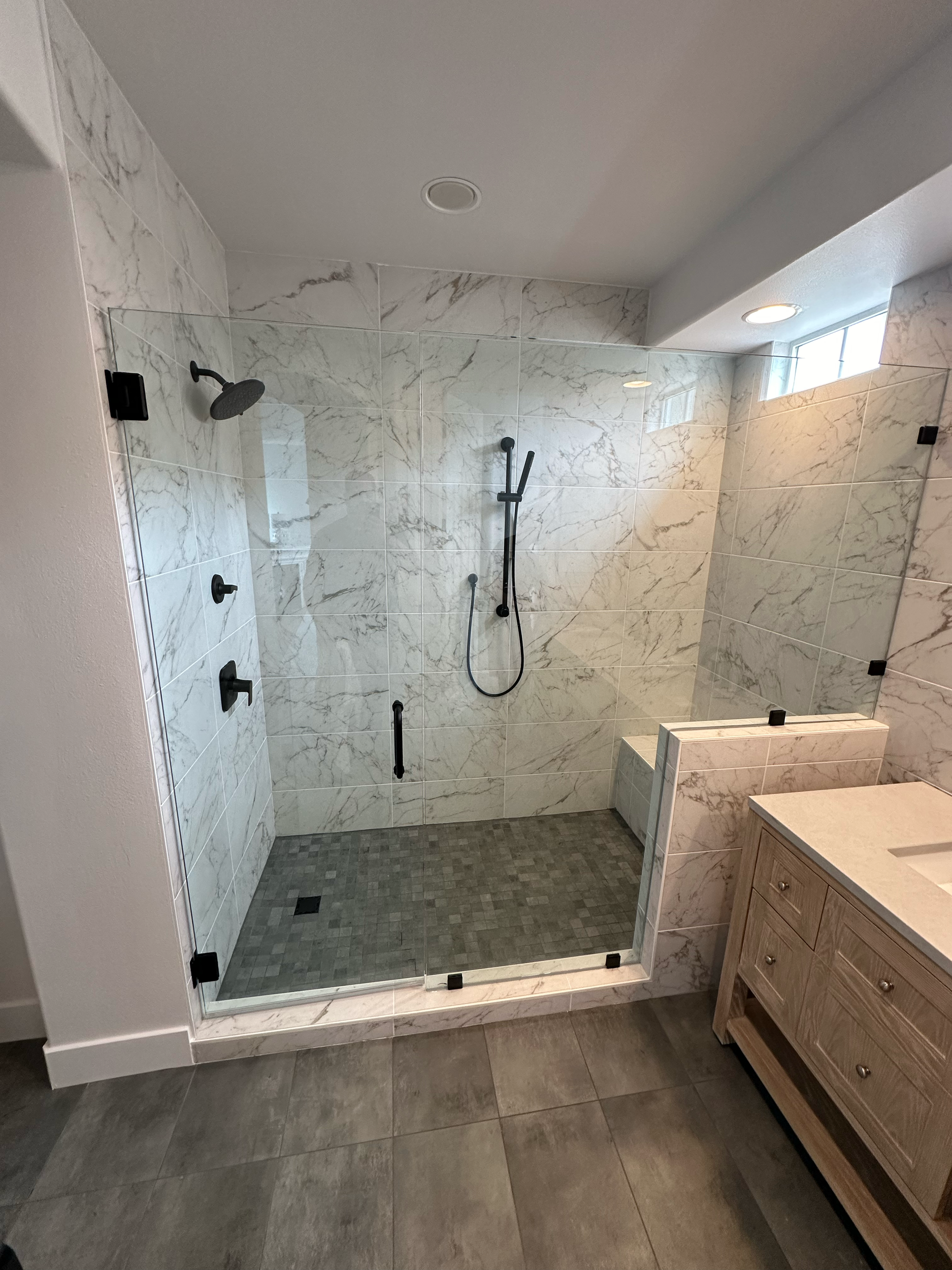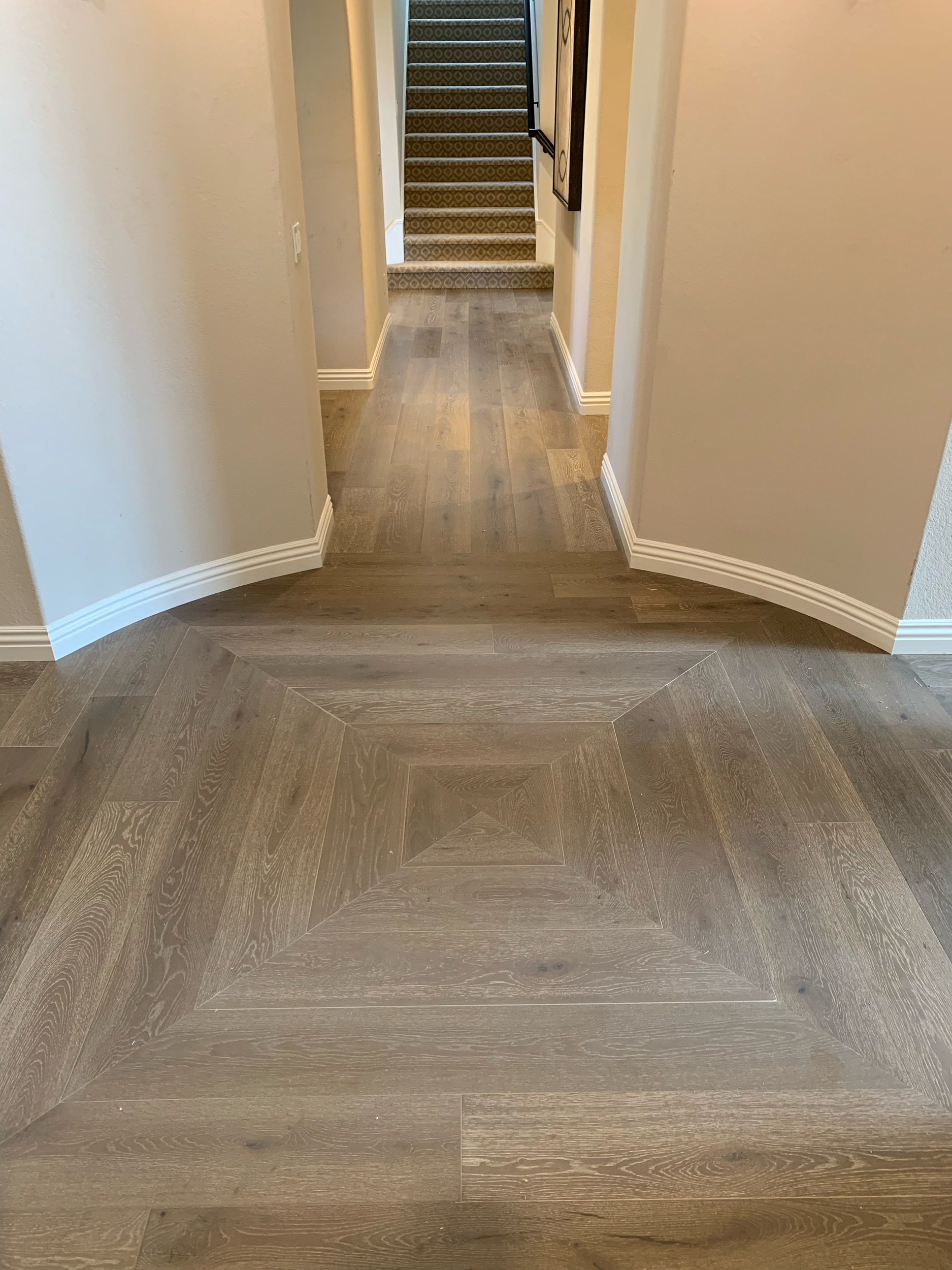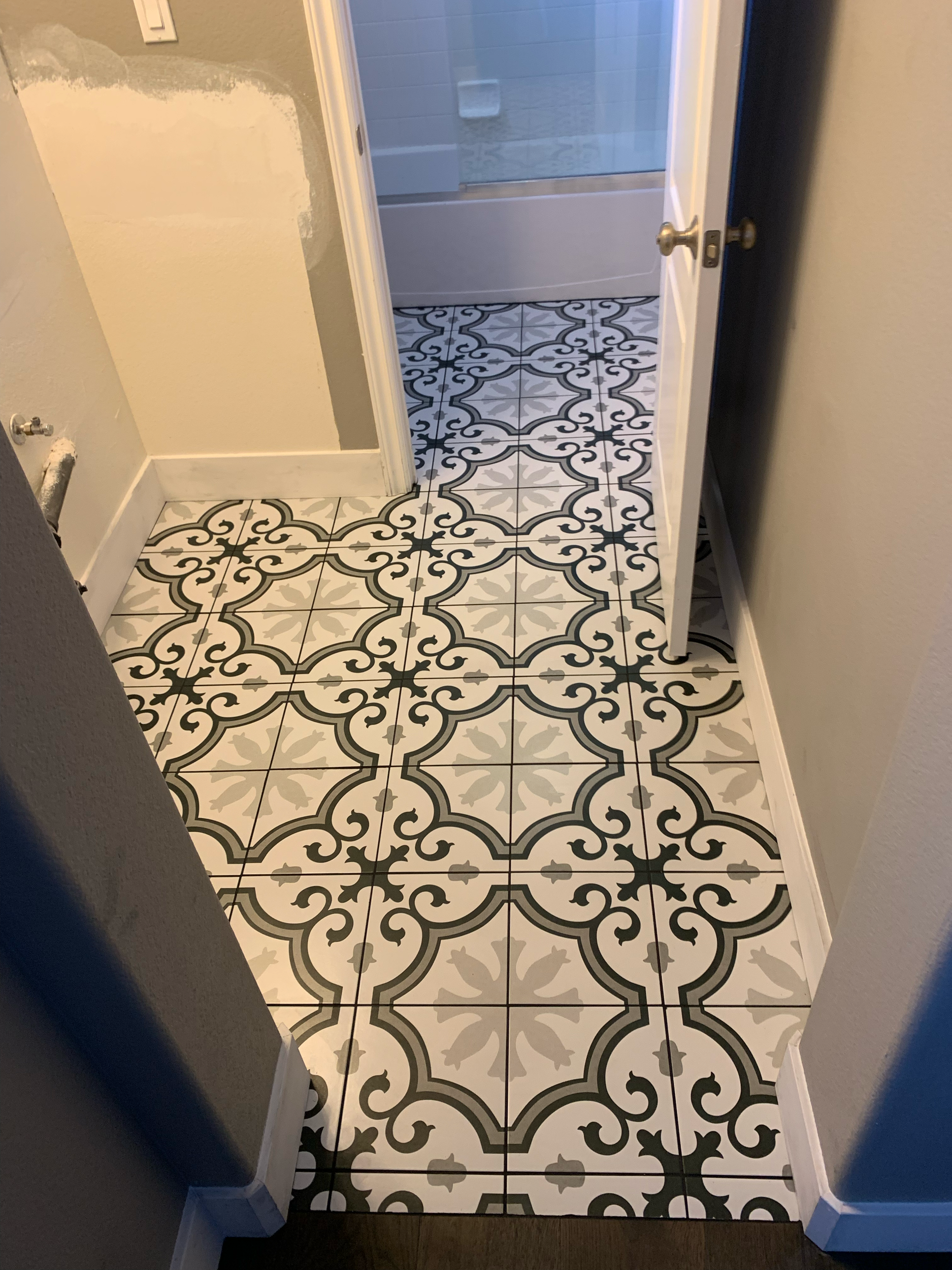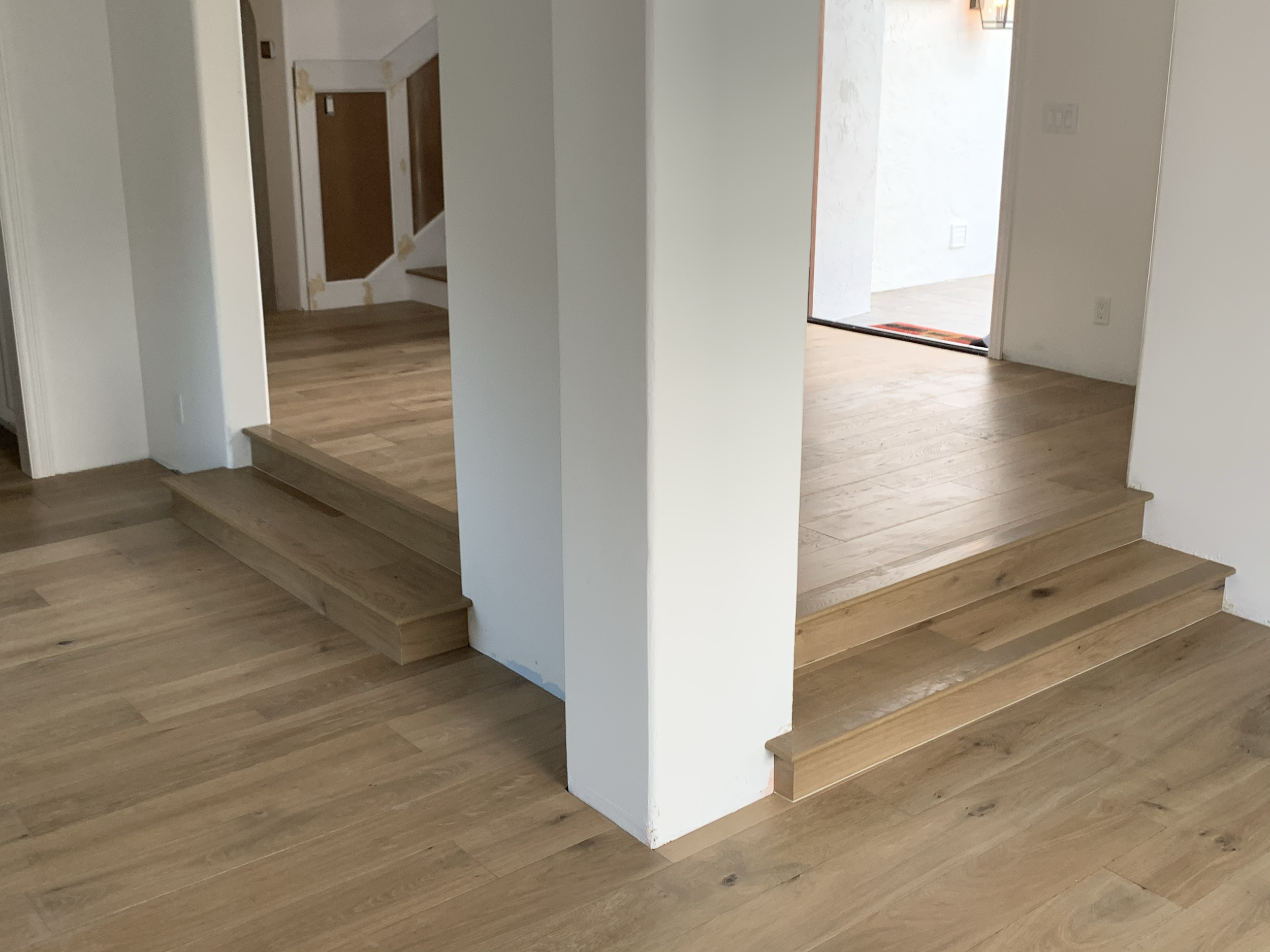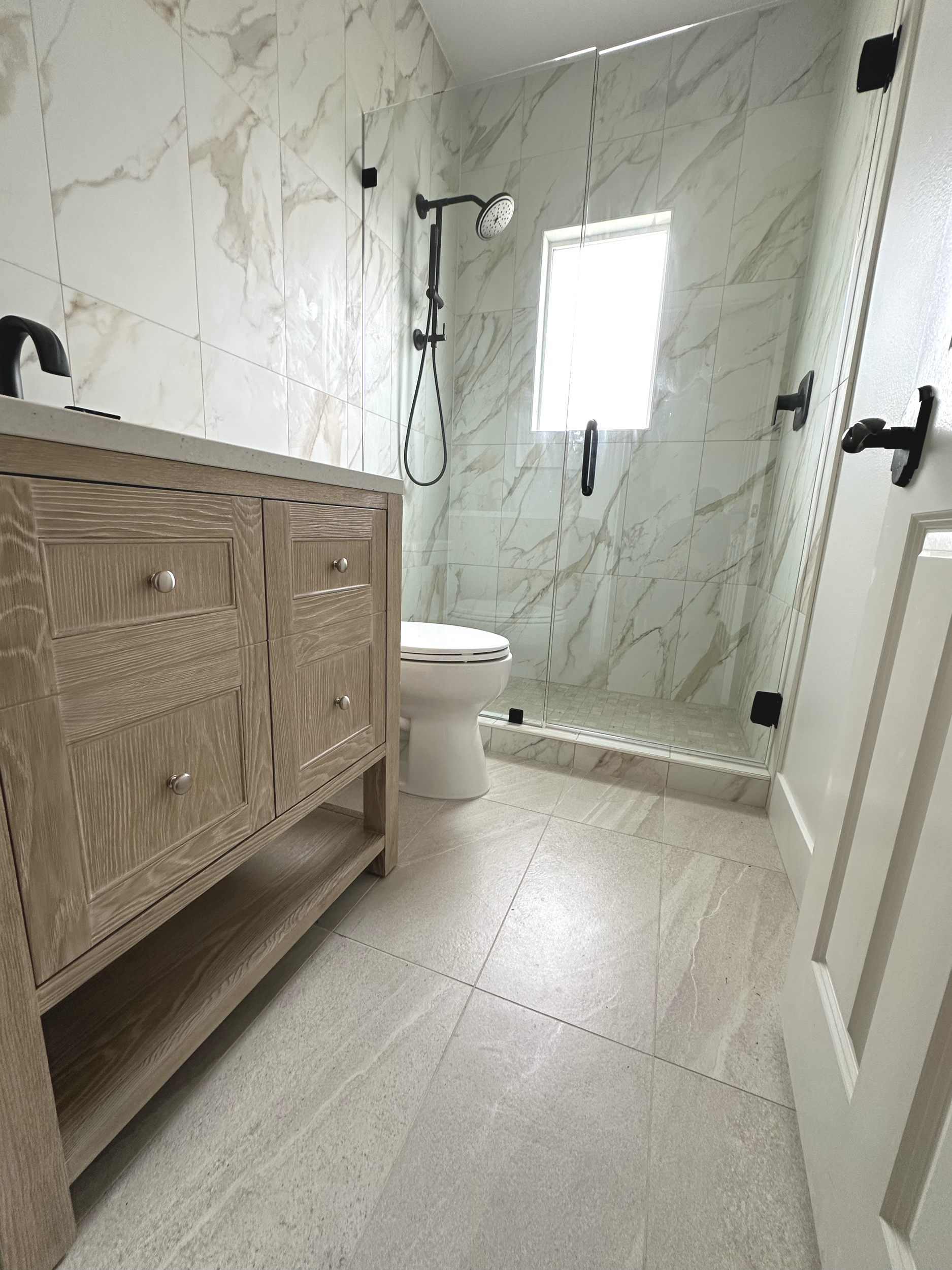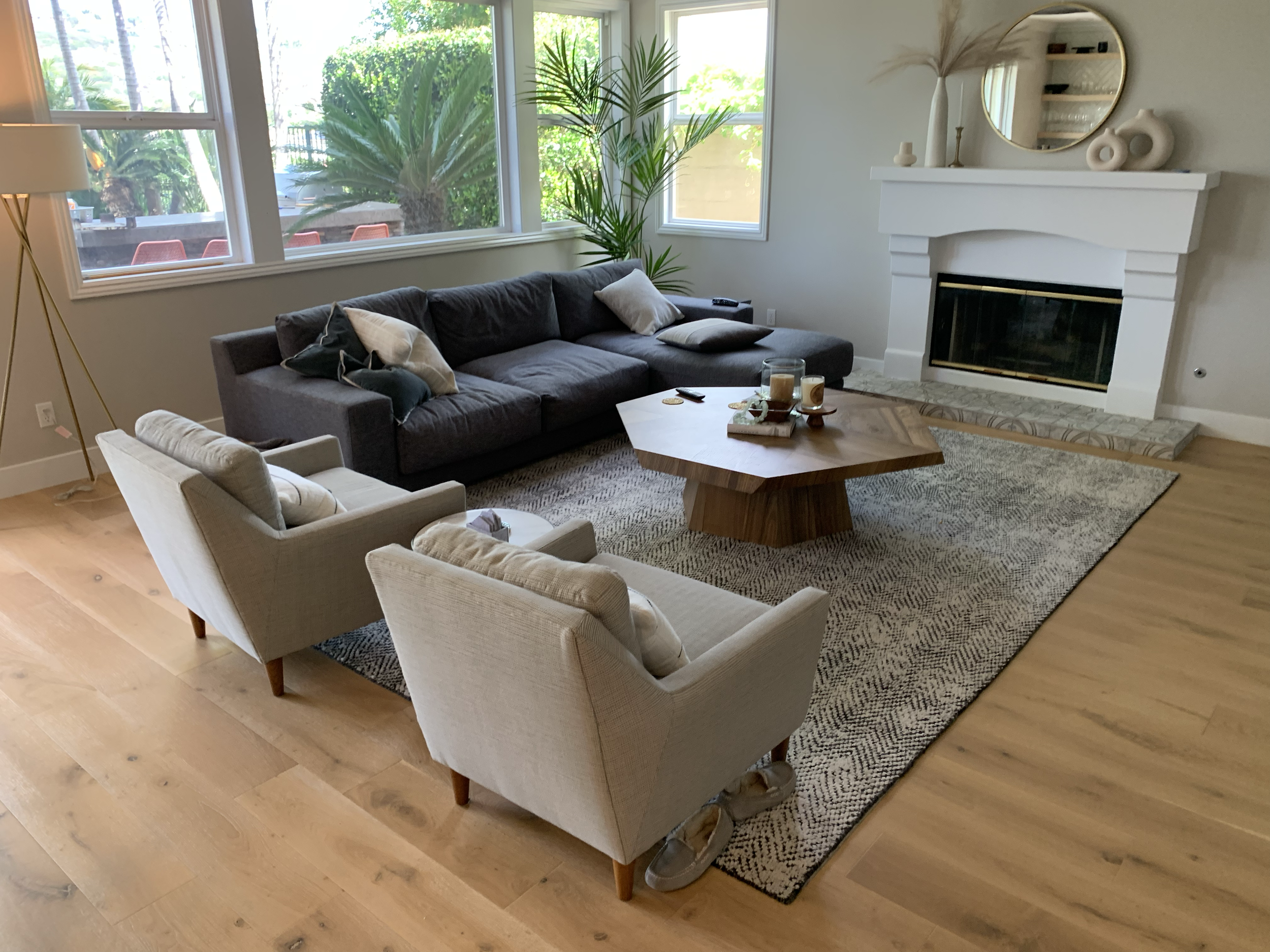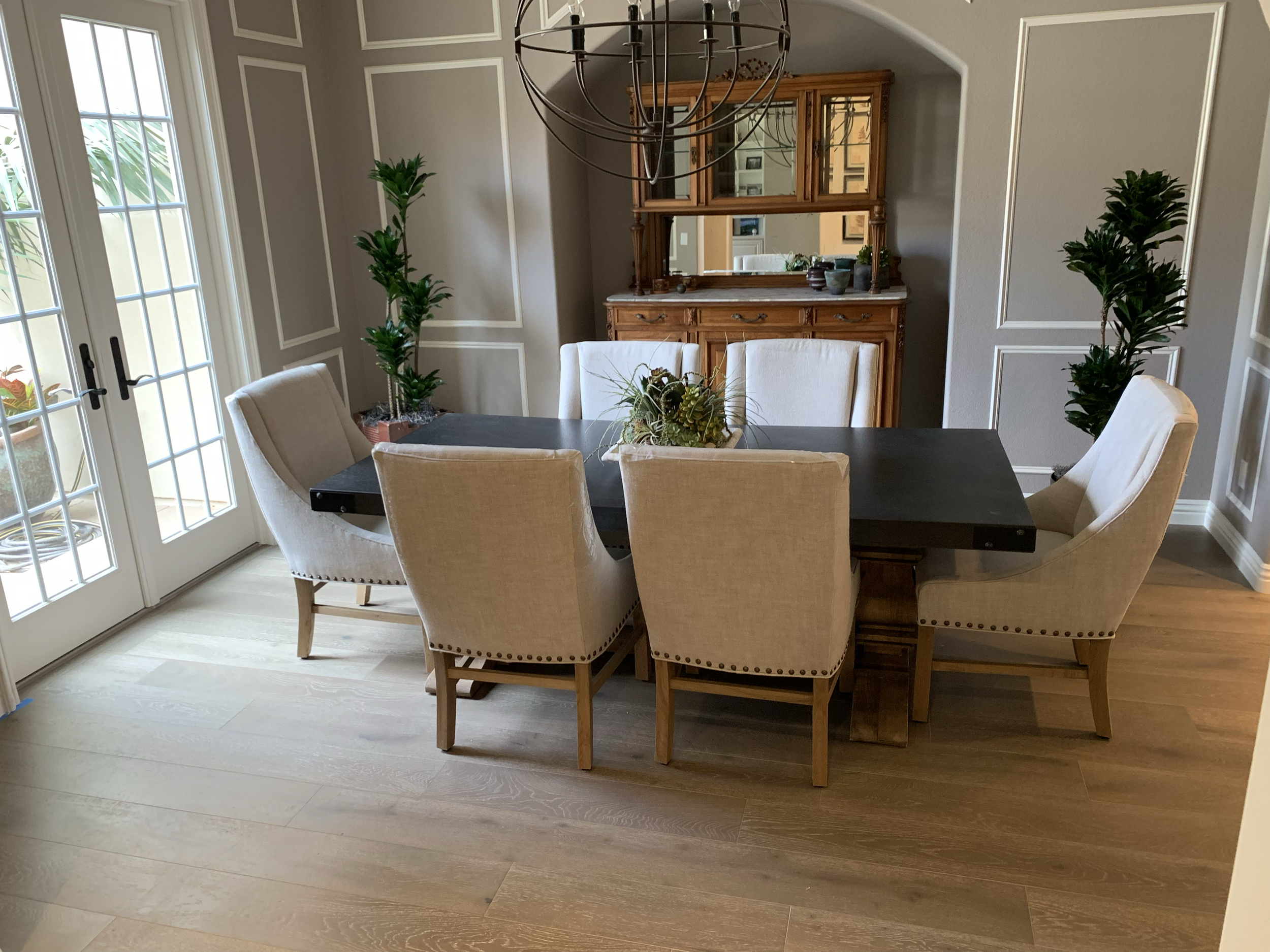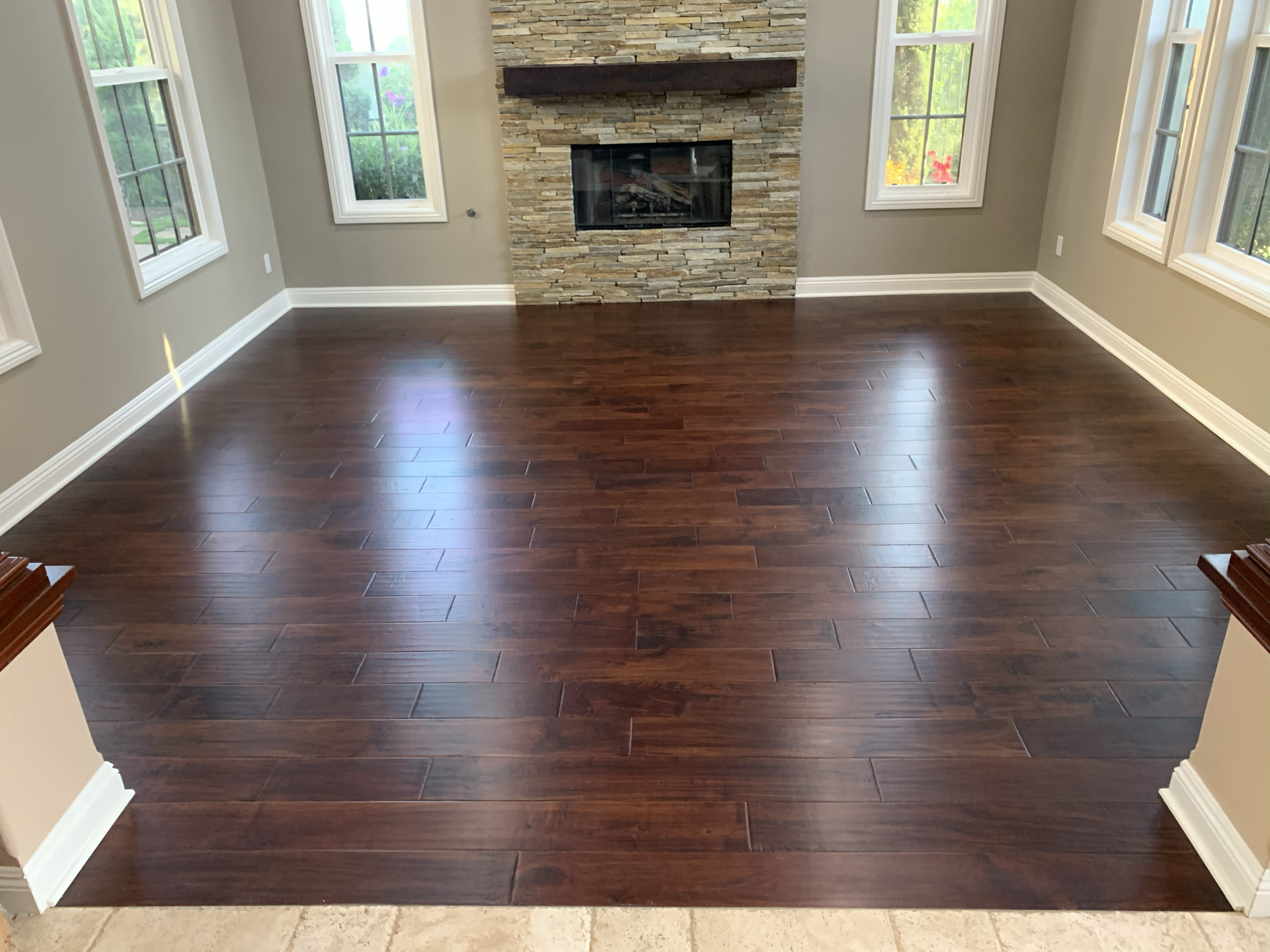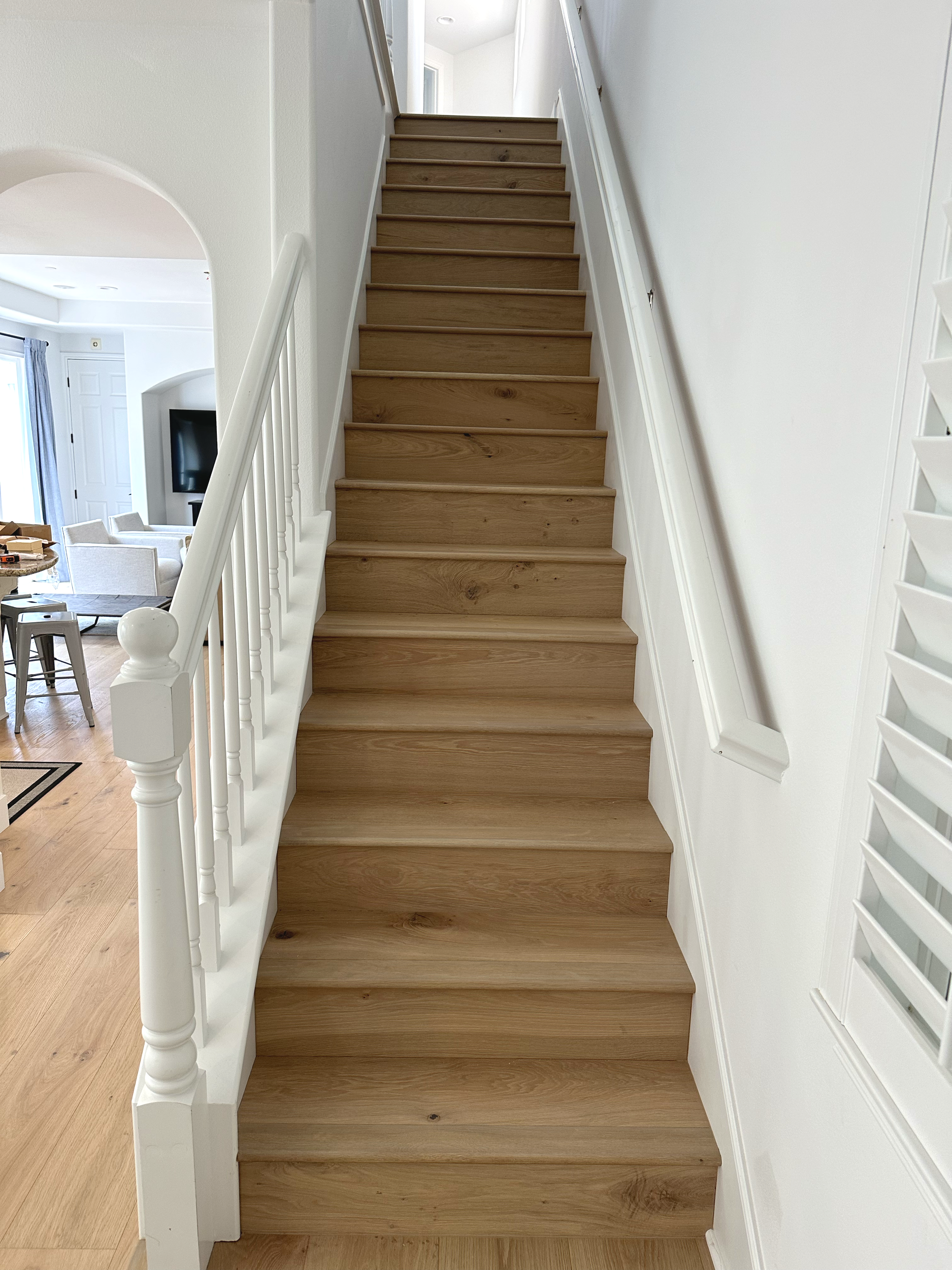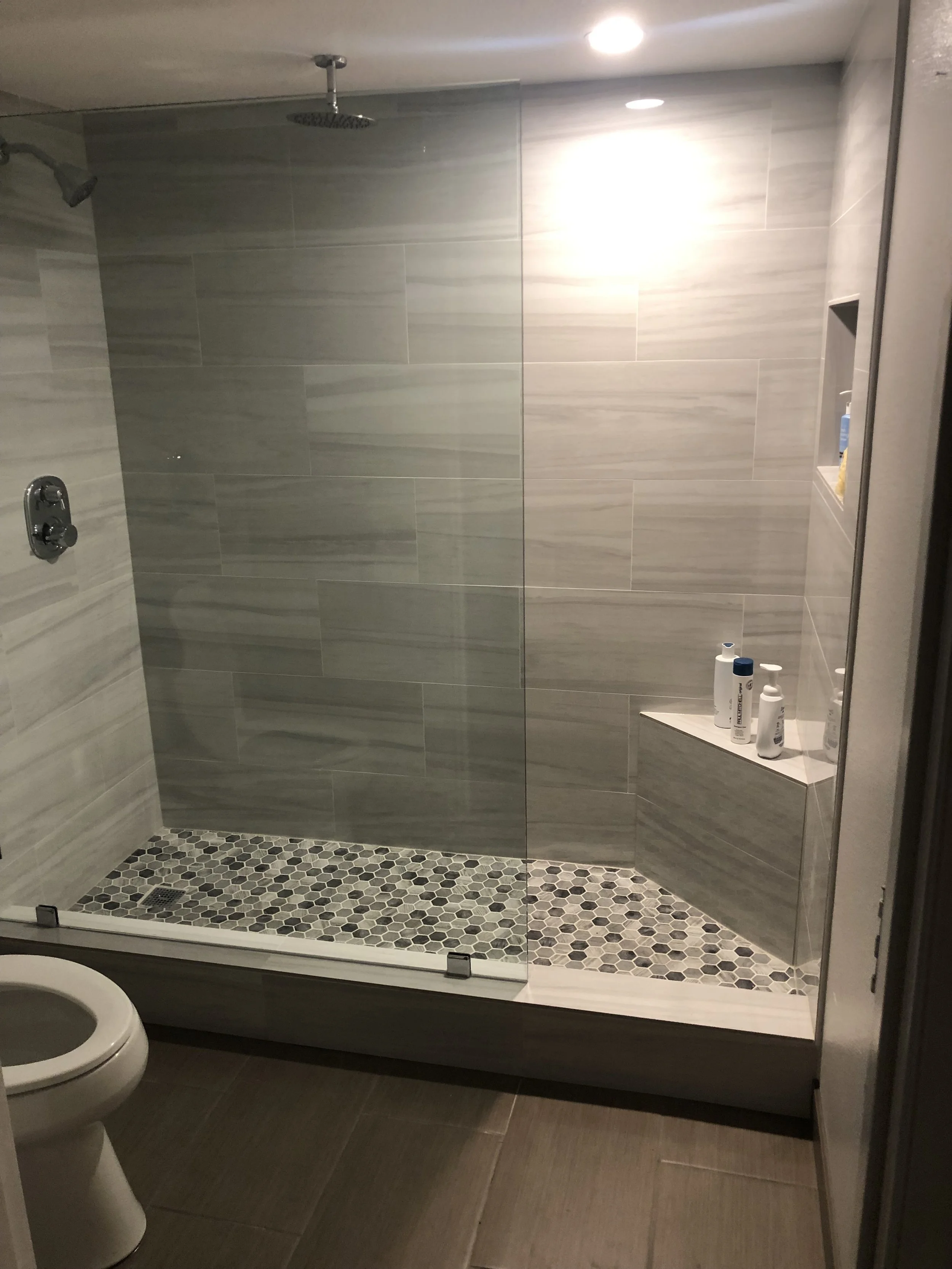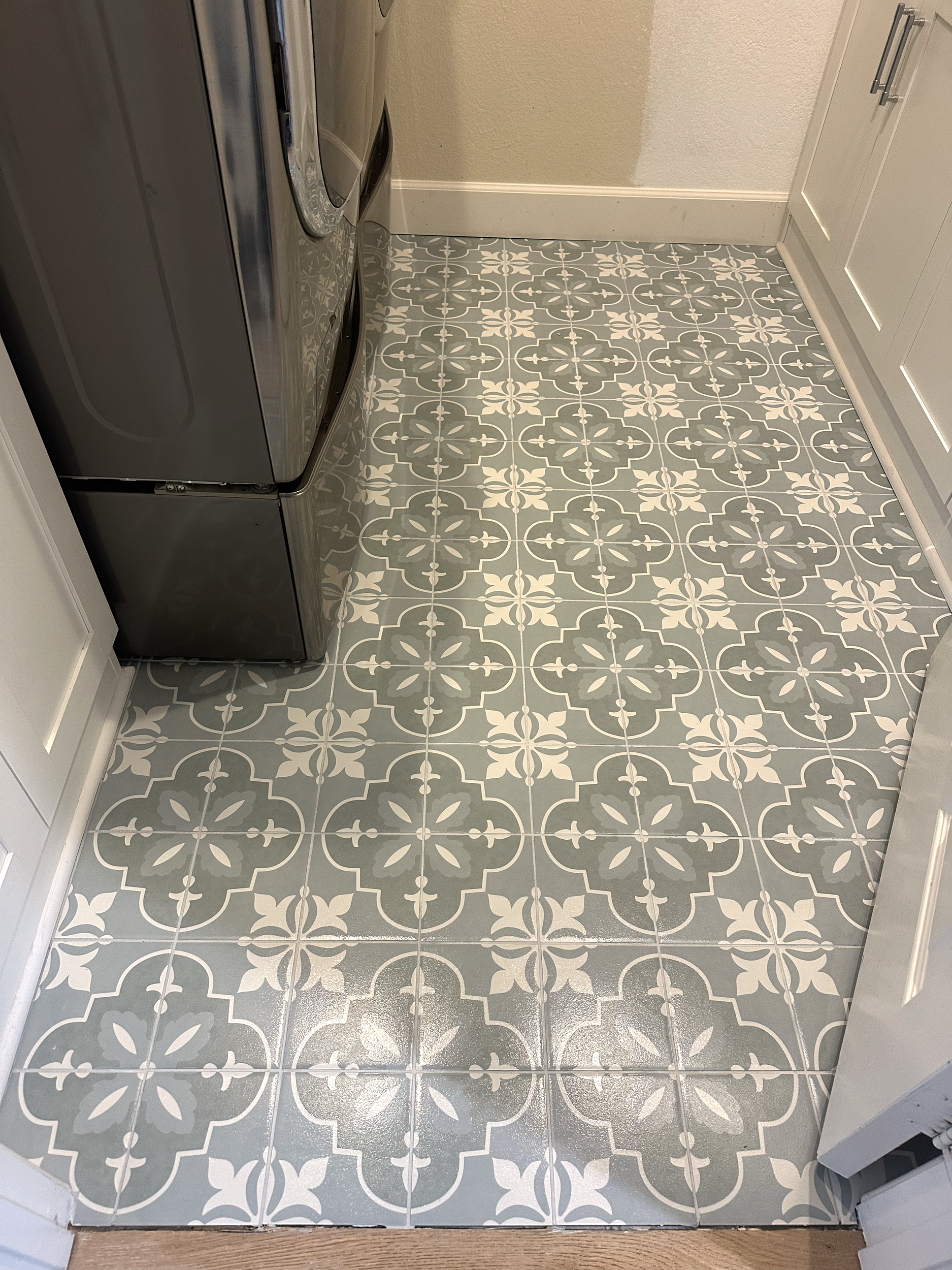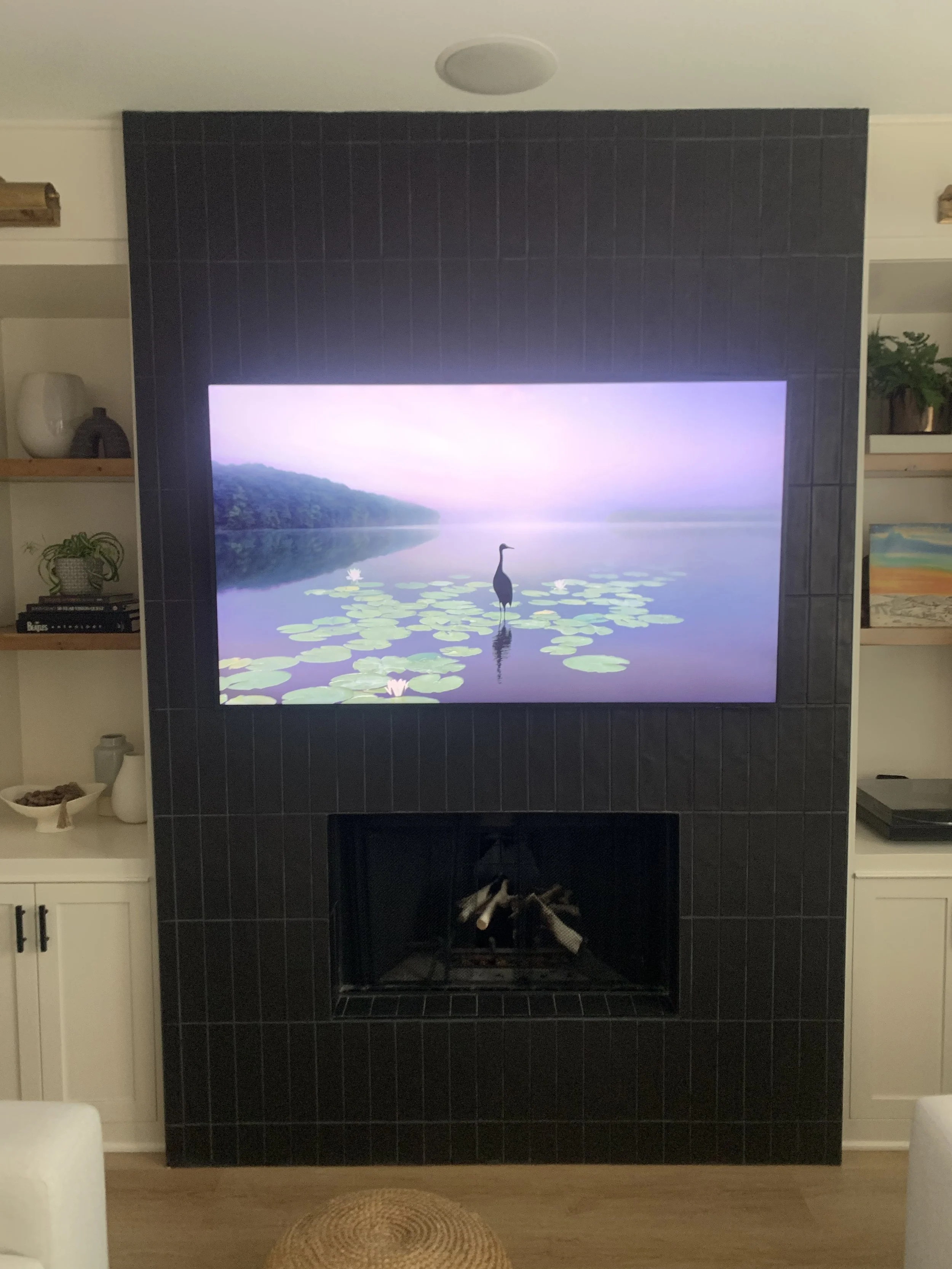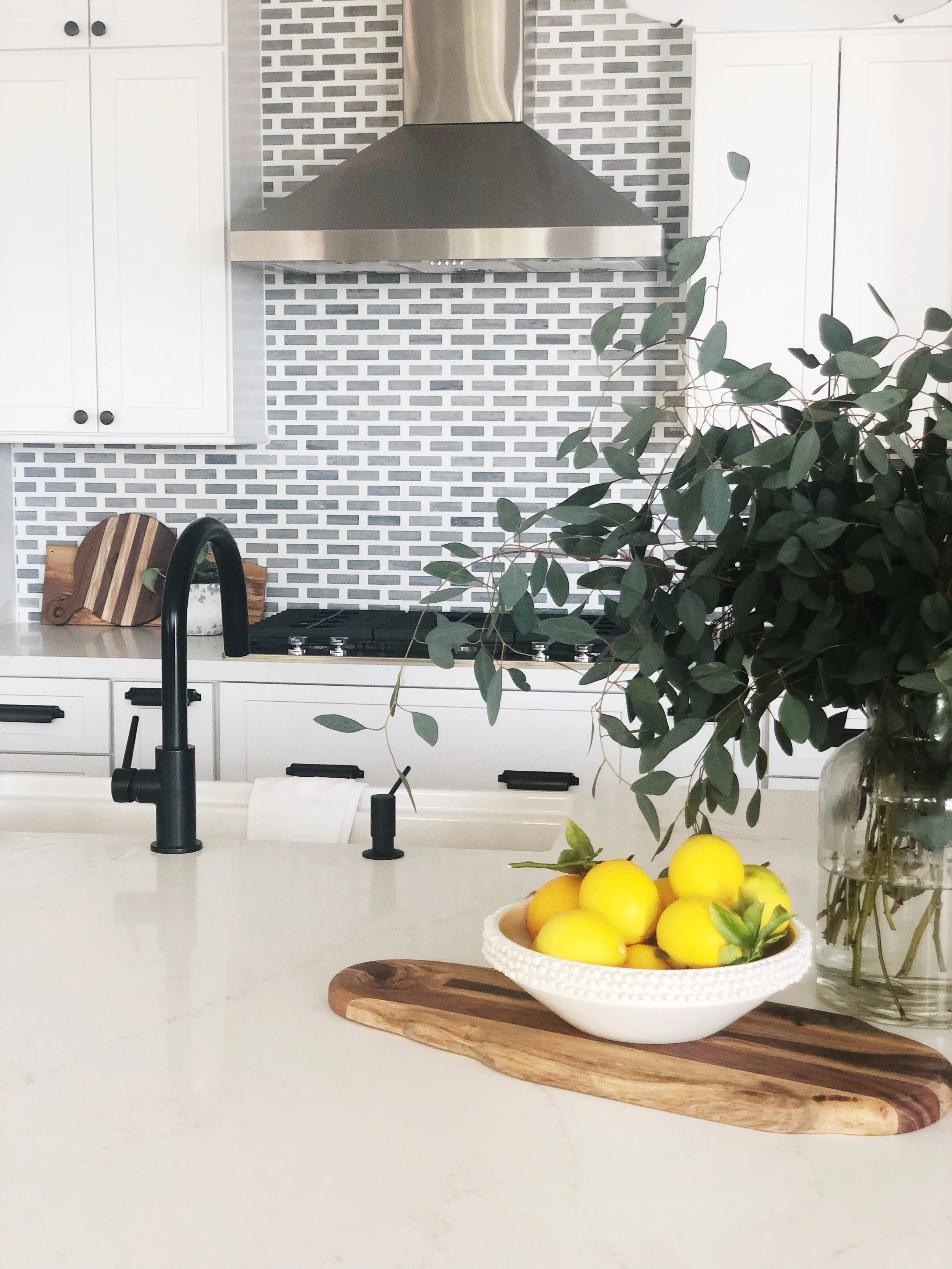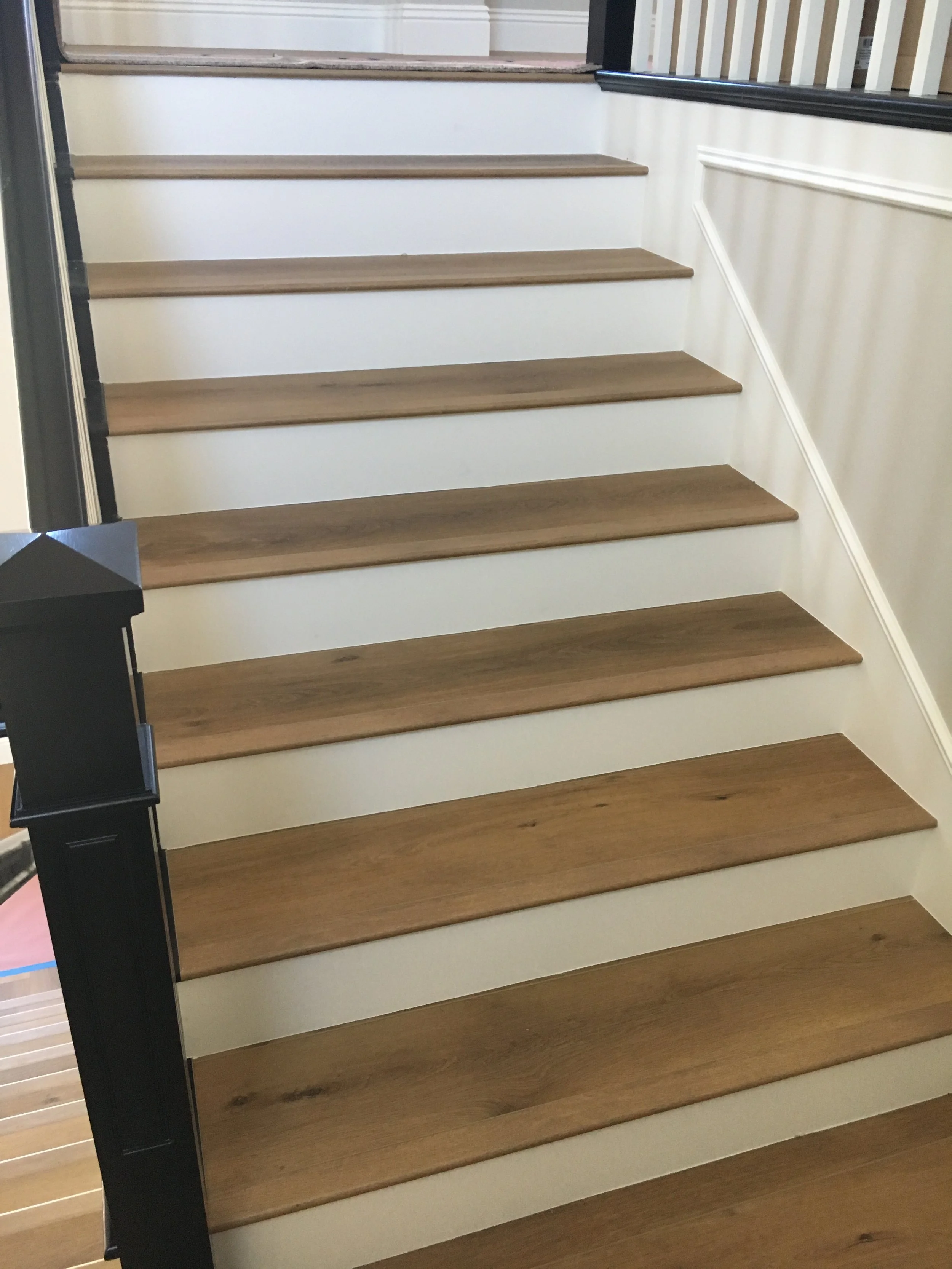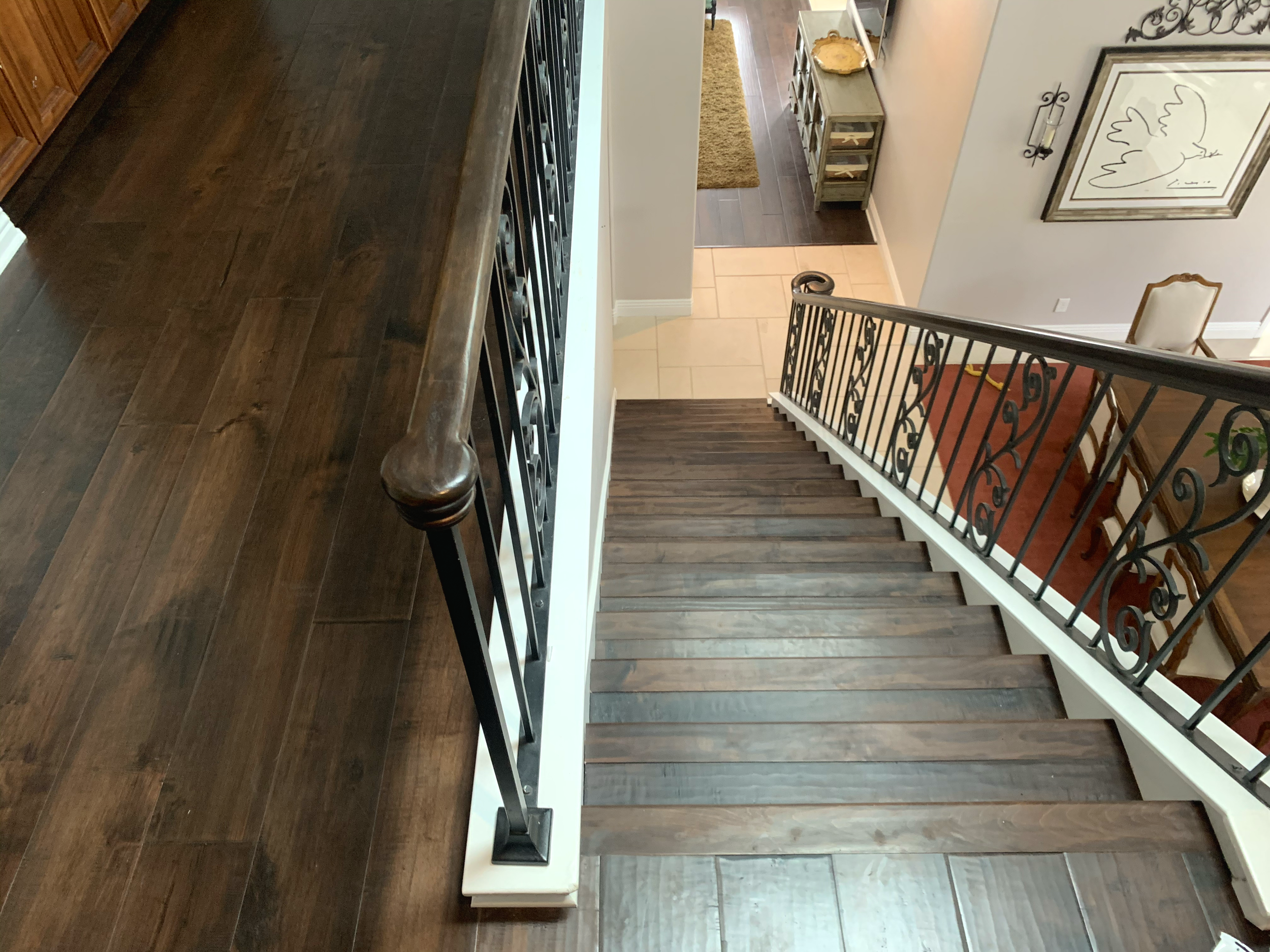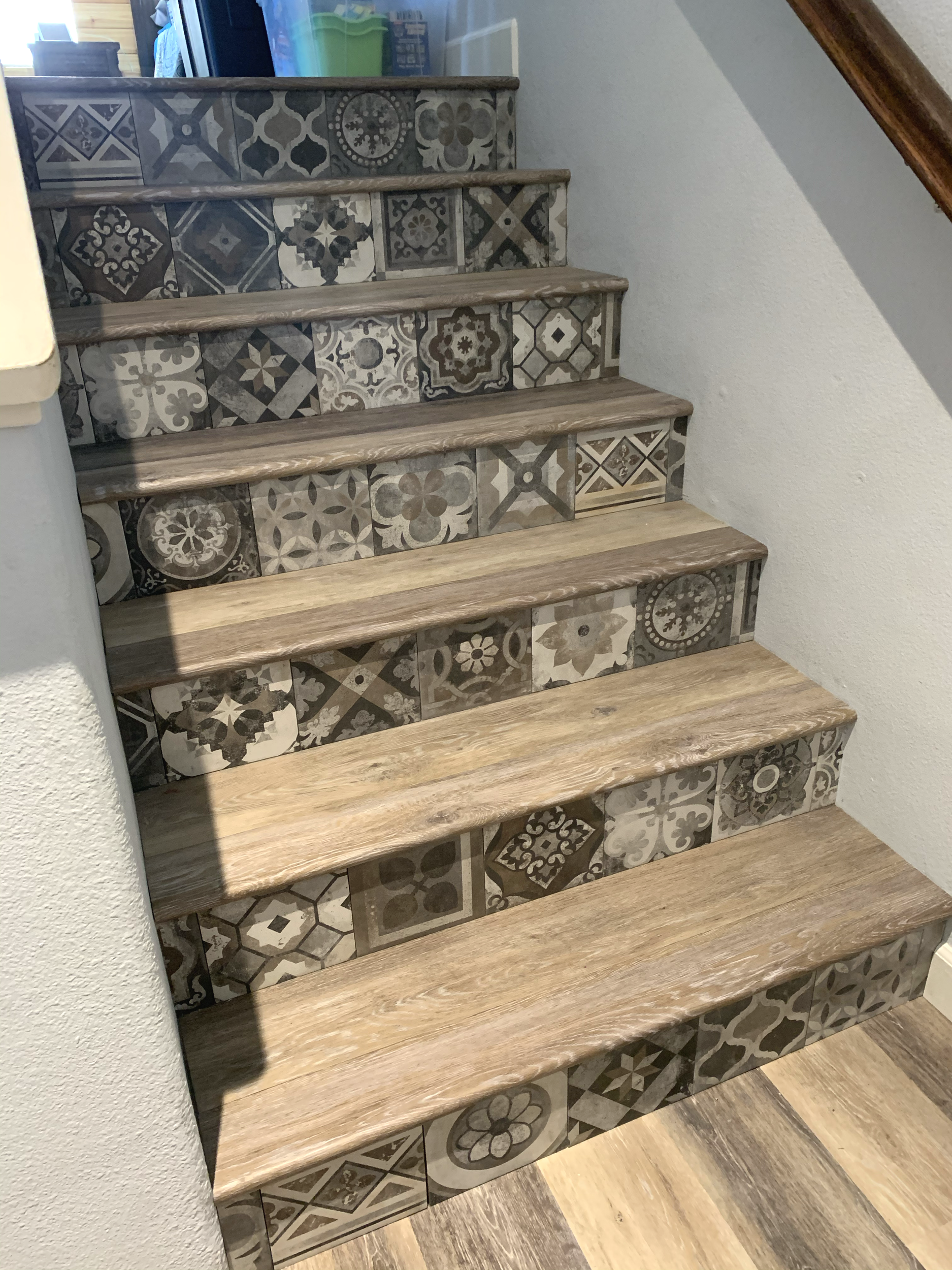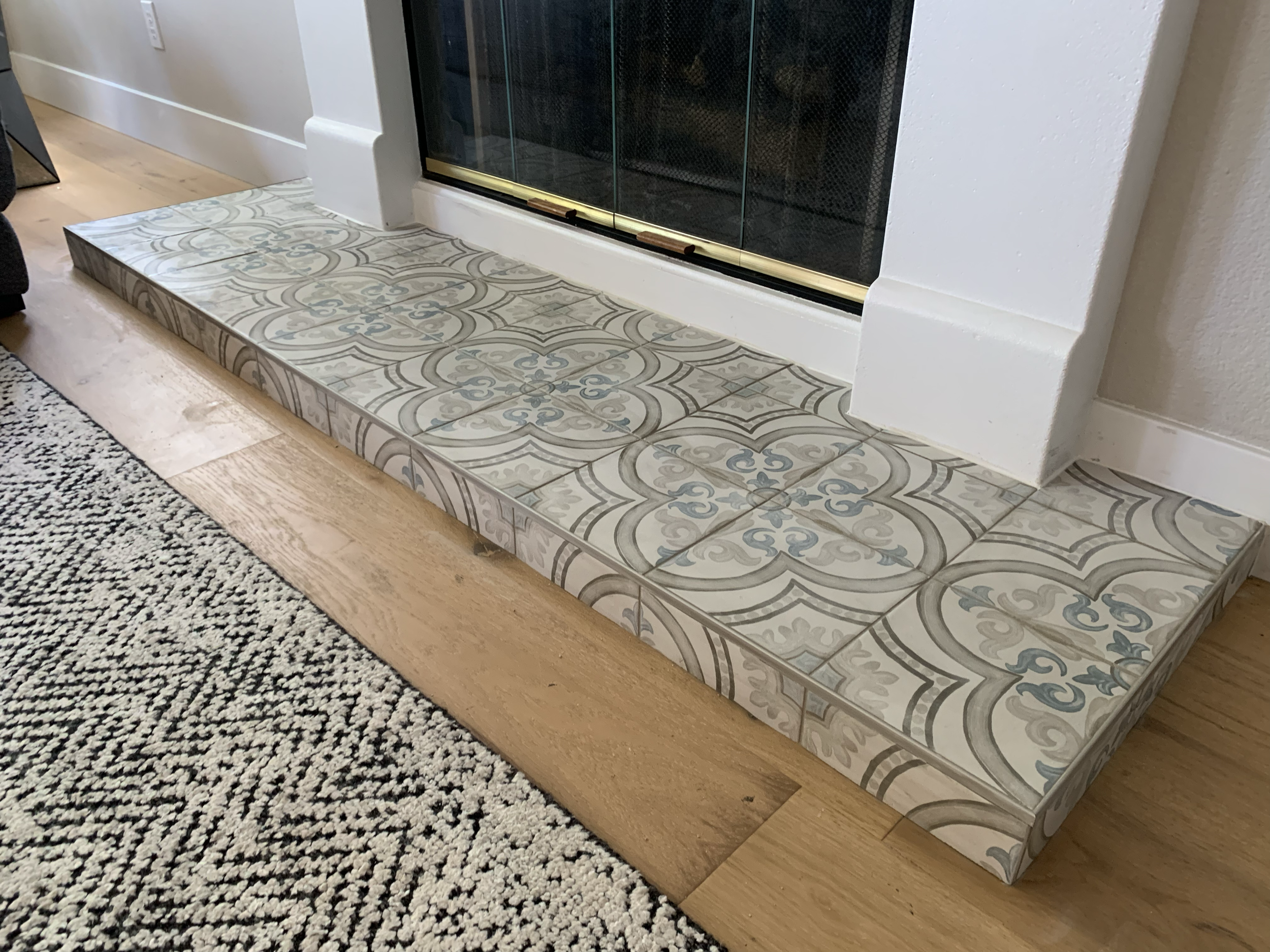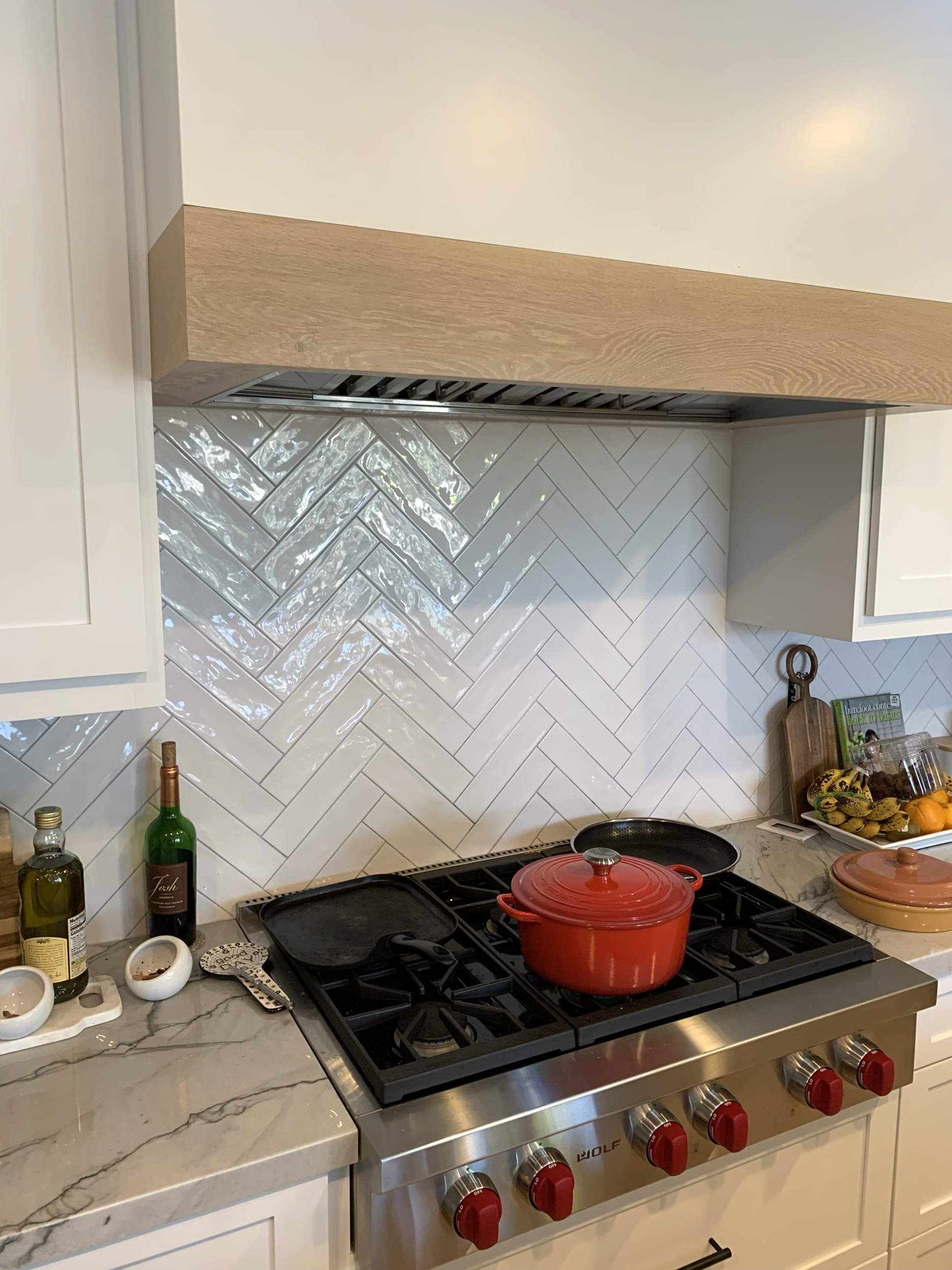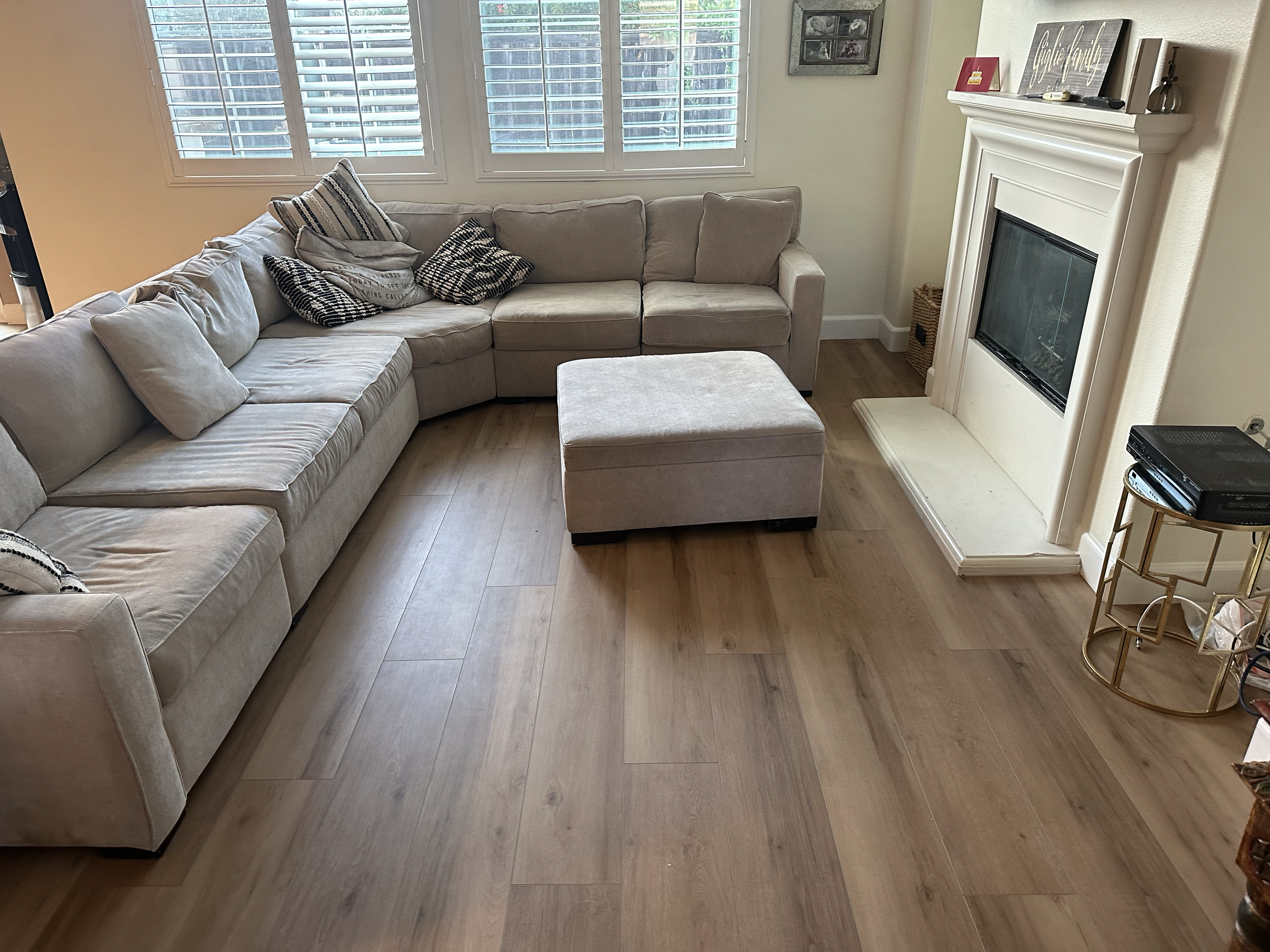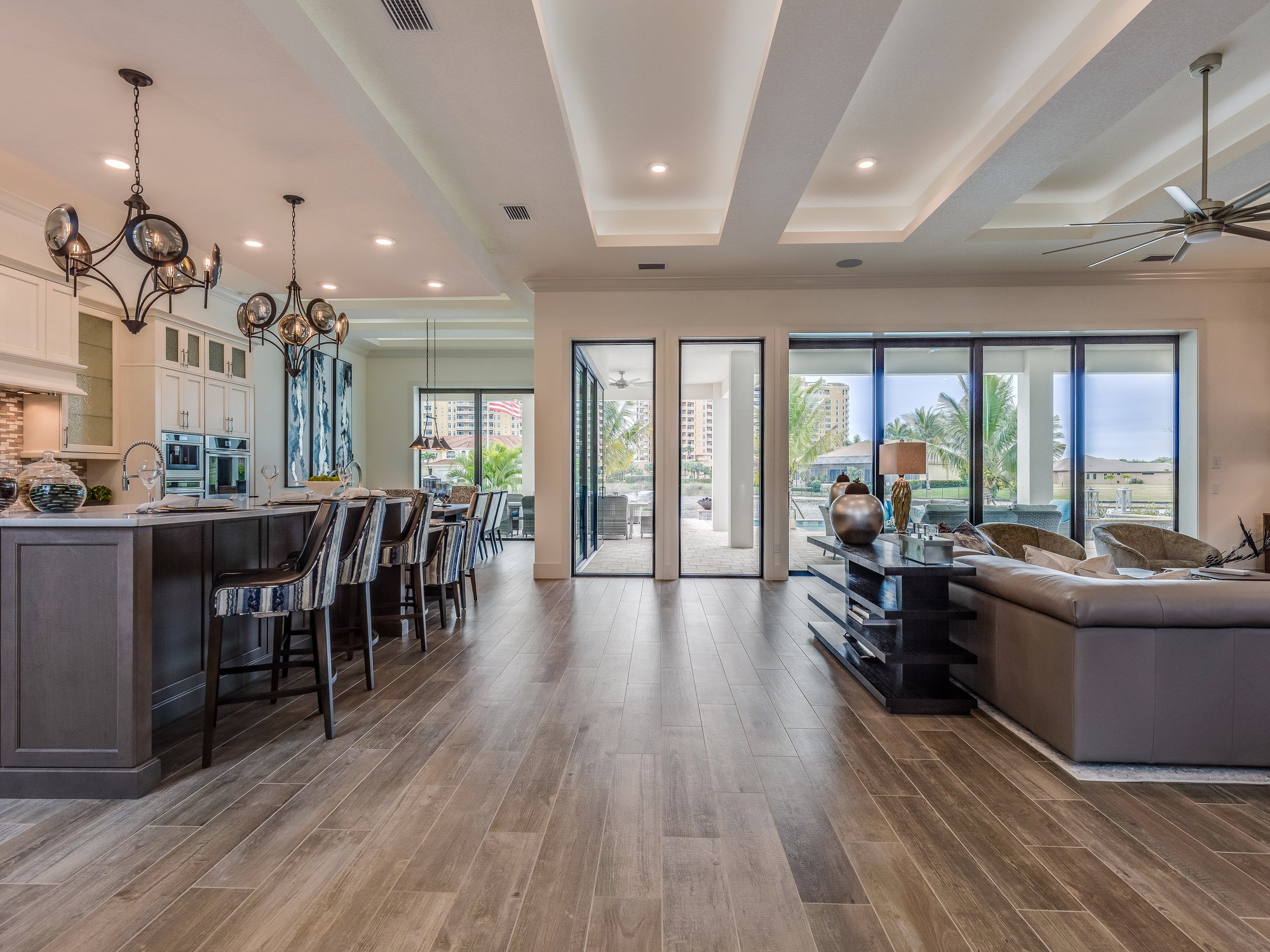
San Diego's Premier Flooring Installation & Concrete Coating Company
For nearly a decade we have called San Diego home. Our small company was established in 1997 and we pride ourselves on our client relationships and using our years of experience to provide amazing products and service.
Our Services
Engineered Wood/Luxury Vinyl Floors
Tile
Installations
Concrete
Coatings
Understanding your options with answers to commonly asked questions in design and installation
-
The most common questions we receive from clients usually revolves around engineered wood vs luxury vinyl floors. The decision on what works best often comes down to two main factors: the look of the product and your household situation determines how you plan to use the floor.
In general, engineered wood floors have a more sought after appeal, as each board or plank has a different grain pattern and therefore a more varied appearance. There is really nothing quite like the look of a beautifully installed wood floor. With today's product construction and quality control, engineered floors have made great strides in long term durability, scratch resistance, and finishes. Product prices are generally a bit higher and installation costs are slightly more due to the longer timeframe it takes to install. While a bit more of an investment the end results are a truly unique and beautiful finished product.
Luxury vinylplank floors (LVP) have gained in popularity over the past decade and offer a great floor with a good price point (sometimes half that of wood) and slightly easier maintenance. They have replaced what laminate floors were years ago with much greater benefits. Most are waterproof and can handle spills and small floods a bit easier. They also hold up better to young children and large pets. However, most LVP's consist of 4-6 patterns that repeat which, when installed incorrectly, make the floor look more fake. The patterns are not evenly distributed throughout their boxes, so some prep work is needed and extra time taken to split up these patterns as best as possible to avoid a repeat look. Many flooring companies do not take the time to do this and just install as planks come out of the box which can lead to multiple repeats in patterns. In this case, the details really matter.
-
Much confusion exists between understanding a solid wood floor vs an engineered wood floor. Solid wood floors are one solid piece of wood milled into a board and usually average about 3/4" in thickness. They are usually softer and can scratch easier, but allow for a resand or screening down the road to restore them to more of an original look. In general, solid wood floors cannot be glued down and therefore need to be installed over a wood subfloor and nailed down. They are not as common in California since most houses are built on concrete slabs, but are more used in states that build with wood subfloors. While beautiful, they need to be maintained well and can look aged and worn quicker.
Engineered wood floors are predominantly what are used in our area. Instead of being solid all the way through, the plank is built with multiple wood layers to add strength and stability. Only the top layer is the decorative layer that shows the grain and color of the wood you choose. Because of the way it is constructed, these floors can be glued directly to the concrete and the finshes on these floors have come a long way over the years, adding to the product's durability and scratch resistance. Most engineered wood floors have the option to do a slight sanding or screening at a later time, but this is usually only a one time option since the top layer is much thinner. Most engineered floors range from 3/8" to 5/8" in thickness and come in a variety of edge styles and color variations.
-
The most common widths of wood flooring today range from 7 inches to 10 inches. Usually the wider the board, the greater the cost per square foot increases. One of the most common floors we install is around 9 inches in width. Keep in mind, that wider boards often look better in larger, open spaces as you have less joints and therefore less options of variance in color and pattern with fewer boards.
With luxury vinyl, the most common widths range from 6 inches to 8 inches, but there are some options for wider planks as well.
-
Wood or Luxury Vinyl staircases are often the statement piece of a home. They consist of the tread (the flat area you actually step on) and the riser (the vertical section on the front of each stair). Most flooring manufacturers supply a stair nosing that matches the flooring and gives a finished edge to the front of the stair. They are available in either a rounded edge or some even have a squared edge profile. When considering your risers, you can keep the stairs the same wood all the way up or choose to do a painted riser, often seen in white or black, to break up the stairs and offer a chance for customization. Something to keep in mind is, if you are doing the same floor downstairs and it ties directly into your staircase, a painted riser often helps to give a break point between the two areas and highlights where the floor ends and the stairs begin.
-
When we come out to meet you at your home for a free consultation, we have some popular product samples which can help to narrow down options such as type of material, color, board width, etc. For a greater selection, we have access to a full flooring showroom which is available to visit with a large variety of products in wood, vinyl, and tile. You can also take home samples to view in your home to see how they look in different lighting and against your paint colors. When you schedule a free consultation, we will measure for new flooring, and provide those numbers to you in our estimate. This is especially helpful when needing to order items such as matching floor mouldings or adjustments to square footage due to floor layouts.
-
When installing your new floors, it is often the time to install new baseboards. This can be in an effort to add more height to your baseboards. Nowadays, a 4"-5" baseboard is common for an average house, even a 6" base is very popular as well. However, most baseboards today feature a more simple styling, with little or no curves and basic edges to aid in cleaning and to match today's more modern design. While most clients at first are hesitant in using a taller base, they often comment after the fact, that the base really sets off the room and adds that finishing touch. We have samples available to show the various options.
If you already have a baseboard installed that you are happy with, a shoe base can be added at the bottom of the baseboard instead of removing the actual baseboard. This option is usually more cost effective, but isn't as popular as it once was, because the finished look isn't as streamlined . We have samples to show the difference so you can pick the look that is right for you.
-
After removing the old flooring, it is important to check your concrete slab or wood subfloor for flatness. We will run a flat bar across the floor to see what, if any, needs adjustment. As long as a floor is flat with limited variance, the actual floor can be unlevel from one side to the other and the installation still be fine. To fix high spots, various grinders can be used to bring these areas into a satisfactory level. In areas that have dips, self leveling concrete products and patches can be used to fill in and flatten out the area to match the rest of the floor. Grinding is usually less expensive as it requires only equipment and time. When adding self levelers, it can be more expensive as we need to add in the cost of the self leveling products. In most cases, subfloor fixes are minor.
-
To install your new floors, we need to remove the old ones. Removal of old carpet is rather quick and simple. Removal of attached products, like glued down wood and tile, takes more time and prep to keep things as clean as possible. To make things easier, we have different pieces of eqiuipment specifically meant to remove these types of flooring in a timely manner. Masking of areas with plastic and using filtration systems can help mitigate dust and debris. Options for removal can be discussed at the initial consultation, so you know what can be expected during this phase of the remodel.
-
When doing a remodel it is often handy, and sometimes necessary, to complete other facets of work while construction is underway. The most common trades we work with during flooring remodels are painters and plumbers. We also have referrals for electricians, cabinet installers, countertop fabricators, etc. We have worked with many different contractors over the years and have specific companies that we can recommend, that we know from experience, do quality work and communicate well with other trades to get the entire project done in a timely manner.
-
For larger areas such as floors and walls, larger format tiles have become very popular. The most common sized large format tile used is a 12"x24" rectangle tile. Larger tiles in squares and rectangles are popular as well, with some even 48"x48" or bigger, in larger open areas. Typically, when you get into the really large tiles, the installation costs increase a bit as it often requires a second person and a specific way of install to handle such large tiles.
Smaller tiles are often used for areas such as a kitchen backsplash, fireplace surrounds, and shower floors. Where safety involving slipping is of concern, smaller tiles have more grout lines and usually offer a grippier surface. Most manufacturers produce tile with various sizes and shapes of the same color and pattern, so you have options to mix and match.
-
Many clients today prefer the option of a larger shower and often have the bathtub removed to add more room. We've done this in primary and hall baths, especially where safety of getting in and out of a taller tub is an issue. However, it is usually recommended to maintain at least one bathtub in the home when considering resale of the property in the future.
-
Concrete coatings have become very popular for their sleek appearance and ease of use and cleaning. We are a certified dealer for Floor Shield, a company that specializes in using today's top concrete coating products for various applications. While many have heard the name epoxy over the years, a higher-end product known as Polyaspartic, is readily being used and has many advantages over standard epoxies. To learn more about our products and the benefits of using Polyaspartics on your garage floor, patio, and walkways, click on this link to explore our concrete coatings section.
-
We are based out of Carlsbad, CA, in the North County San Diego area. We service all of San Diego County and into Orange County and the Temecula valley area. We offer a full line of wood flooring, luxury vinyl, tile, and Polyaspartic concrete coating installations.
Project Gallery




